Low carb diets have been around for a long time and are used not only in food but also for medicinal purposes. The menu of a carbohydrate-free diet is varied, the table of allowed foods (vegetables, fruits, cereals, etc. ) includes a large number of items and dishes.
What is a Carbohydrate Free Diet?
A carbohydrate-free diet is a food system, which aims to limit the intake of carbohydrates in the body, and eating mostly protein foods with a small amount of fat, mainly of plant origin.
Benefits of a Carbohydrate Free Diet
carbohydrate-free diet, compared to similar dietary restrictions for weight loss,has the following advantages:
- significant rate of weight loss;
- moderation of the feeling of hunger;
- normalization of blood sugar;
- beneficial effect on brain function;
- low effect on heart and blood vessels;
- reducing the risk of developing cancerous tumors.
The advantages of the technique are associated with an almost complete reduction or exclusion of glucose from the daily diet. Glucose, or other molecules that can be converted to glucose, are found in all carbohydrate foods, whether whole grains, legumes, starchy vegetables, fruits, sweeteners, and nuts, seeds, and vegetables.
Stages of the diet
Due to the flow of ketosis in the body, this method of nutrition is also called keto diet.. In order for the process to start completely and active fat burning to begin, 4 stages must pass:
| phase | Features |
|---|---|
1 |
Carbohydrates enter the body only in the morning in the amount of 20 g, and in the remaining time to provide energy, it will absorb glucose from its reserves. |
2 |
The body no longer replenishes itself with glucose and begins to consume the glycogen contained in the muscles and liver. After 2-3 days, the fat burning process will accelerate, as the lack of carbohydrates will be felt more and more, the body will more actively consume alternative energy reserves. |
3 |
The phase begins after 3-4 days, when the carbohydrates are almost running out. Energy is generated by first burning fats and then proteins. In the first week, the menu should contain a large amount of protein food (up to 3-4 g per 1 kg of human weight). |
4 |
Starts in a week. The goal is to consolidate the results obtained. The body is already accustomed to the lack of carbohydrates and provides itself with energy through increased fat burning. The ketosis process begins completely only with the beginning of the 4th stage. |
What to eat and how to make a menu?
The daily calorie content of meals in a carbohydrate-free weight loss system should be 1200 kcal for women and no more than 2100 kcal for men. The diet should include meat, fish, seafood, milk, dairy products, cheeses, nuts, cereals. To balance carbohydrates, you need to add vegetables, beans, citrus fruits, fruit, sugar-free tea in a small amount. The menu for the week can be compiled based on the allowed products table.
Table with carbohydrates and calories
| Product | carbohydrates | Zhirov | Belkov | calories |
|---|---|---|---|---|
| Vobla dried | 0. 0 | 5. 5 | 46. 4 | 235. 1 |
| salmon caviar | 0. 0 | 13. 8 | 31. 6 | 250. 6 |
| Caviar bli | 0. 0 | 9. 7 | 28. 9 | 202. 9 |
| Turkey breast fillet | 0. 0 | 0. 8 | 24. 4 | 104. 8 |
| Ton fillet | 0. 0 | 4. 3 | 24. 4 | 136. 3 |
| Dutch cheese | 0. 0 | 30. 5 | 23. 7 | 369. 3 |
| Maasdam cheese | 0. 0 | 30. 5 | 23. 7 | 369. 3 |
| canned salmon | 0. 0 | 6. 6 | 23. 5 | 153. 4 |
| Atlantic mackerel | 0. 0 | 6. 4 | 23. 4 | 151. 2 |
| Marble Cheese | 0. 0 | 29. 0 | 23. 0 | 353. 0 |
| Processed cheese Smoked sausage | 0. 0 | 19. 0 | 23. 0 | 263. 0 |
| Canned tuna | 0. 0 | 0. 7 | 22. 5 | 96. 3 |
| Salted pink salmon | 0. 0 | 9. 0 | 22. 1 | 169. 4 |
| Processed cheese | 0. 0 | 27. 0 | 22. 0 | 331. 0 |
| Fresh pink salmon | 0. 0 | 7. 0 | 21. 0 | 147. 0 |
| Canned pink salmon | 0. 0 | 5. 8 | 20. 9 | 135. 8 |
| Beef pulp | 0. 0 | 2. 6 | 20. 3 | 104. 6 |
| beef fillet | 0. 0 | 2. 8 | 20. 2 | 106. 0 |
| Fresh salmon | 0. 0 | 11. 0 | 20. 2 | 179. 8 |
| Salted salmon | 0. 0 | 11. 0 | 20. 2 | 179. 8 |
| salted salmon | 0. 0 | 11. 0 | 20. 2 | 179. 8 |
| Roquefort cheese | 0. 0 | 28. 0 | 20. 0 | 332. 0 |
| Category 1 beef | 0. 0 | 2. 0 | 19. 7 | 96. 8 |
| Complete turkey (corpse category 1) | 0. 0 | 22. 0 | 19. 5 | 276. 0 |
| Pork fillet | 0. 0 | 7. 1 | 19. 4 | 141. 5 |
| river perch | 0. 0 | 0. 9 | 18. 5 | 82. 1 |
| Perch fillet with skin | 0. 0 | 1. 1 | 18. 4 | 83. 5 |
| The whole zender | 0. 0 | 1. 1 | 18. 4 | 83. 5 |
| cod fillet | 0. 0 | 1. 1 | 18. 4 | 83. 5 |
| point | 0. 0 | 1. 1 | 18. 4 | 83. 5 |
| consolatory | 0. 0 | 1. 3 | 18. 2 | 84. 5 |
| beef liver | 0. 0 | 3. 7 | 17. 9 | 104. 9 |
| lumi krucian | 0. 0 | 1. 8 | 17. 7 | 87. 0 |
| Herring s / m | 0. 0 | 19. 5 | 17. 7 | 246. 3 |
| Baltic salted sprat | 0. 0 | 7. 6 | 17. 1 | 136. 8 |
| Fresh uncut panties | 0. 0 | 4. 1 | 17. 1 | 105. 3 |
| lamb pulp | 0. 0 | 14. 4 | 17. 0 | 197. 6 |
| The hind leg of the lamb on the bone | 0. 0 | 14. 4 | 17. 0 | 197. 6 |
| Salted herring | 0. 0 | 8. 5 | 17. 0 | 144. 5 |
| Fiston deti s / m | 0. 0 | 1. 1 | 16. 7 | 76. 7 |
| Blocks with head | 0. 0 | 10. 9 | 16. 4 | 163. 7 |
| Lime fillet with cartilage-free skin | 0. 0 | 10. 9 | 16. 4 | 163. 7 |
| Chicken eggs (yellow) | 0. 0 | 30. 5 | 16. 1 | 338, 9 |
| beef heart | 0. 0 | 3. 5 | 16. 0 | 95. 5 |
| crab king | 0. 0 | 3. 6 | 16. 0 | 96. 4 |
| Pollock | 0. 0 | 0. 9 | 15. 9 | 71. 7 |
| Duck (corpse category 1) | 0. 0 | 38. 0 | 15. 8 | 405. 2 |
| Lamb lungs | 0. 0 | 2. 3 | 15. 6 | 83. 1 |
| Beef lungs | 0. 0 | 4. 7 | 15. 2 | 103. 1 |
| calf kidney | 0. 0 | 2. 8 | 15. 2 | 86. 0 |
| Complete goose (processed corpse of the first category) | 0. 0 | 39. 0 | 15. 2 | 411. 8 |
| Fresh hat | 0. 0 | 7. 1 | 13. 1 | 116. 3 |
| Smoked carbonate (raw smoked hips) | 0. 0 | 47. 4 | 10. 5 | 468. 6 |
| chicken eggs (protein) | 0. 0 | 0. 0 | 9. 0 | 36. 0 |
| sea cabbage | 0. 0 | 0. 2 | 0. 9 | 5. 4 |
| chicken soup | 0. 0 | 0. 0 | 0. 0 | 0. 0 |
| gravy | 0. 0 | 0. 0 | 0. 0 | 0. 0 |
| Meat and bone juice | 0. 0 | 0. 0 | 0. 0 | 0. 0 |
| fish soup | 0. 0 | 0. 0 | 0. 0 | 0. 0 |
| Unrefined peanut oil | 0. 0 | 92. 0 | 0. 0 | 828. 0 |
| Unrefined walnut oil | 0. 0 | 92. 0 | 0. 0 | 828. 0 |
| Unrefined sesame oil | 0. 0 | 92. 0 | 0. 0 | 828. 0 |
| Extra virgin olive oil | 0. 0 | 92. 0 | 0. 0 | 828. 0 |
| Refined olive oil | 0. 0 | 99. 9 | 0. 0 | 899. 1 |
| Olive oil with truffle flavor | 0. 0 | 92. 0 | 0. 0 | 828. 0 |
| Sunflower oil, unrefined | 0. 0 | 92. 0 | 0. 0 | 828. 0 |
| Refined sunflower oil | 0. 0 | 99. 9 | 0. 0 | 899. 1 |
| Boneless chicken | 0. 1 | 11. 0 | 21. 3 | 184. 6 |
| Chicken legs | 0. 1 | 11. 0 | 21. 3 | 184. 6 |
| chicken wings | 0. 1 | 11. 0 | 21. 3 | 184. 6 |
| Minced chicken legs | 0. 1 | 11. 0 | 21. 3 | 184. 6 |
| Mushrooms with fresh butter | 0. 5 | 0. 7 | 2. 4 | 17. 9 |
| fresh mushrooms | 0. 5 | 1. 2 | 2. 2 | 21. 6 |
| Fresh mushrooms | 0. 5 | 0. 8 | 1. 8 | 16. 4 |
| Sour eggs | 0. 6 | 13. 1 | 11. 9 | 167, 9 |
| chicken eggs | 0. 7 | 11. 5 | 12. 7 | 157. 1 |
| Sliced cheese | 1. 5 | 20. 2 | 15. 6 | 250. 2 |
| Low fat cottage cheese | 1. 8 | 0. 6 | 18. 0 | 84. 6 |
| Broccoli | 1. 8 | 0. 9 | 4. 4 | 32. 9 |
| green salad | 2. 3 | 0. 2 | 1. 5 | 17. 0 |
| cucumbers | 2. 6 | 0. 1 | 0. 8 | 14. 5 |
| Fatty cottage cheese | 2. 8 | 18. 0 | 14. 0 | 229. 2 |
| Lemon | 3. 0 | 0. 1 | 0. 9 | 16. 5 |
| Asparagus | 3. 2 | 0. 1 | 1. 9 | 21. 3 |
| Walnut kernels | 3. 3 | 68. 5 | 14. 7 | 688. 5 |
| Shallo | 3. 3 | 0. 2 | 1. 5 | 21. 0 |
| Sunflower seeds) | 3. 4 | 52. 9 | 20. 7 | 572. 5 |
| pumpkin seeds | 3. 4 | 52. 9 | 20. 7 | 572. 5 |
| Yogurt 1. 5% fat | 3. 5 | 1. 5 | 5. 0 | 47. 5 |
| Low fat kefir | 3. 8 | 0. 1 | 3. 0 | 27. 7 |
| Radish | 3. 8 | 0. 1 | 1. 2 | 20. 9 |
| TOMATO | 3. 8 | 0. 2 | 1. 1 | 21. 4 |
| Pine walnut kernel | 4. 0 | 68. 6 | 14. 0 | 689. 4 |
| Ryazhenka 6% fat | 4. 1 | 6. 0 | 3. 0 | 82. 4 |
| fennel greens | 4. 1 | 0. 5 | 2. 5 | 30. 9 |
| Sauerkraut | 4. 5 | 0. 1 | 1. 7 | 25. 6 |
| cauliflower | 4. 5 | 0. 3 | 2. 5 | 30. 7 |
Which foods should be excluded from the diet
Among carbohydrate-rich foods are soda, sweets and pastries. They should definitely be excluded.
Prohibited and restricted products for the menu of a carbohydrate-free diet are included in the following table:
Cereal products |
With a carb-free diet, you should rule out any possibility for bakery products, be it buns, bagels, biscuits, pies. All of these products are rich in carbohydrates. This applies to whole grain breads as well as products made from refined flour. Most cereals are also rich in carbohydrates, they are forbidden foods for a carbohydrate free diet. These include rice and oats. |
sweet fruits |
Most fruits should not be eaten on a carbohydrate-free diet. The optimal daily portion is a cup. For example, only one apple fruit contains 21 g of carbohydrates. And the sweeter the fruit, the more carbohydrates. |
starchy vegetables |
Vegetables are a source of fiber. Its properties are such that as the brush cleans all the toxins, food debris from the intestines, due to which the excess weight is removed and sugar is normalized. However, vegetables contain not only fiber but also starch, which is unacceptable in a carbohydrate-free diet, they should be excluded from the menu. |
pasta |
One serving of cooked pasta contains 44 g of carbohydrates, of which 4 g of fiber. |
beers |
Beer is not so rich in carbohydrates to avoid it altogether. But you can not abuse it either, because even 1 can of light beer contains 6 g of carbohydrates. |
Sweetened yogurt |
Homemade yogurt contains some carbohydrates, but this is only true if no sugar is added. If we talk about sweet yogurt bought, then such a product contains so many carbohydrates that it includes a sweet dessert. For example, fruit yogurt contains approximately 49 g of carbohydrates, even ice cream with the same amount of carbohydrates is less. |
legume |
They are rich in both fiber and carbohydrates. |
Honey or sugar in any form |
Too much sugar is found in biscuits, cakes and pastries. Aside from the fact that they have a lot of sugar, they have virtually no benefit to the body. |
Dry foods |
Carbohydrates found in chips and crackers can be stored quickly as extra weight. 1 french fries = 19 g carbohydrates. In addition, chips and other similar products are usually consumed in large quantities. |
Light drinks |
Carbonated drinks are made with added sugar and contain few nutrients. |
It is important to choose foods that are nutritious, rich in protein but low in carbohydrates.
Table of permitted products
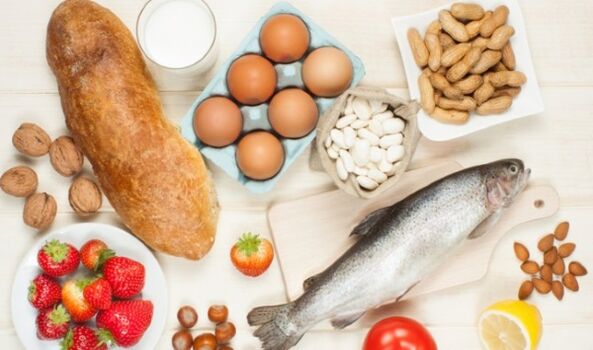
| List of recommended food groups | Food |
meat |
Any kind: beef, pork, lamb, game, poultry. You can eat meat fat, chicken skin. |
egg |
Boiled, fried, fried, omelette - in any form. |
Fish and seafood |
They eat all kinds of oily fish, both river and sea. But it is necessary to avoid bread products during cooking. |
natural fat |
To make the dishes from the daily menu more delicious, the addition of butter and cream will help. The use of coconut oil and olive oil is also welcome. |
aboveground vegetables |
All kinds of cabbage, rose hips, bok choy, spinach, asparagus, zucchini, eggplant, olives, spinach, cucumbers, tomatoes. |
milkweed |
These include real butter, cream (40% fat), yogurt and sour cream and cheese. Reduced-fat milk should be included with caution, as such products contain a large amount of milk sugar. |
berries |
Any berries will be suitable to replace the usual sweets. |
nuts |
Almonds and cashews can be replaced with popcorn, candy or chips, without abuse. |
Mushrooms |
This is a source of protein. Mushrooms meet all the requirements of the prescribed diet. |
How long can you stay on a carb-free diet?
A carbohydrate-free diet should have a period of purely individual use.You need to focus on well-being, health, weight. It happens that after a week of dietary nutrition, there is a significant decrease in strength, in this case, many people switch to the usual good food and do not achieve the desired results in weight loss.

Others, after a few months of dieting, not only achieve the desired results, but also exceed them. Moreover, their well-being does not fail throughout the diet.
The average duration of a carbohydrate restricted diet is 4 to 8 weeks.
Example of menu for the day
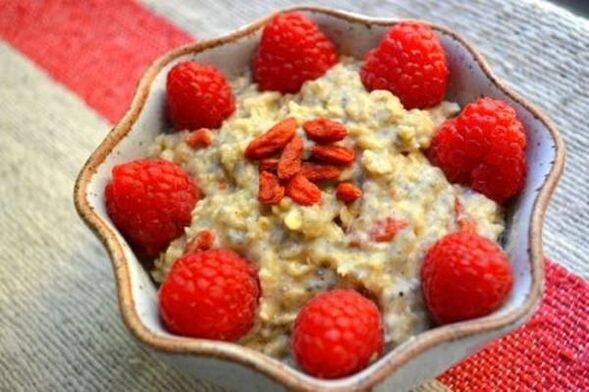
| Look | diets | records |
|---|---|---|
| 7. 00 | water | A glass of water on an empty stomach |
| 7. 30 | water | Half a glass of water |
| 8. 00 | BREAKFAST | Eggs, scrambled eggs, porridge (buckwheat, rice, oats, millet), cottage cheese, kefir |
| 9. 00 | water | Glass of water |
| 10. 00 | water | Glass of water |
| 10. 30 | Snack | Fruits or vegetables |
| 11. 30 | water | Glass of water |
| 12. 30 | water | Glass of water |
| 13. 00 | dinner | Chicken, fish or beef with vegetables |
| 14. 00 | water | Glass of water |
| 15. 00 | water | Glass of water |
| 16. 00 | Snack | Fruits, vegetables, dried fruits or nuts |
| 17. 00 | water | Glass of water |
| 18. 00 | water | Glass of water |
| 19. 00 | dinner | Chicken, fish or beef with vegetables |
| 20. 00 | water | Glass of water |
Example of menu for the week
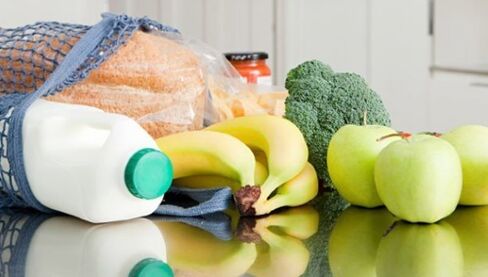
| Days of the week | The menu is carbohydrate free |
|---|---|
Monday |
|
Tuesday |
|
Wednesday |
|
Thursday |
|
Friday |
|
Saturday |
|
Sunday |
|
Menu rules
The menu of a carbohydrate-free diet should be designed so as not to use products that are not included in the allowed table - this is the main requirement.
Recommendations of nutritionists to follow:
- Baked products, sweets, biscuits, pastas are all rich in carbohydrates and bad fats. You need to learn to avoid beige products.
- Soda, fruit juices, flavored milk and energy drinks are liquid sugar in a bottle.
- Cream soup is a good substitute for ordinary soups and juices.
- Many meat dishes on the menu are good, but only if they are made from natural and fresh meat.
- Fish Day is the key to success in the fight against weight.
- A slice of dark chocolate once a week will improve your mood.
What and how much to drink on a carbohydrate-free diet
The carb-free diet menu also includes drinks. By selecting them according to the product table, it is necessary to determine what effect they have on the sugar level and what is their caloric content.
- water. It is responsible for water salt metabolism, has zero carbohydrates and zero calories.
- milky. There is a moderate amount of carbohydrates, but they should be considered if you drink about 100 ml of milk or more per day. In general, milk is useful because. is a source of energy for people who want to monitor their weight. Skimmed milk has half the calories of whole milk.
- Fruit juice. Despite the fairly high level of carbohydrates, fruit juice does not need to be completely excluded from the menu. It can be drunk during intense exercise, as physical activity will help balance blood sugar levels. But it is important to be natural and sugar-free fruit juice.
- Sweet refreshing drinks. Carbonated drinks with sugar have no nutritional value, they contain nothing but a large amount of sugar. They can be drunk only in a single case when it is necessary to increase blood glucose levels, for example, before, during or after exercise.
- Diet refreshing drinks. Diet soft drinks contain artificial sweeteners and other artificial aids to sweetness, aroma and color. Although soft drinks are considered safe to consume, the research is not so clear.
The carbohydrate-free diet (menu and food table above) allows the consumption of tea in moderation. According to studies, tea is good for health, thanks to its use increases insulin sensitivity and blood pressure is maintained at the right level.
Those who want to drink tea with milk will be disappointed when they learn that all the beneficial properties are neutralized when milk is added to tea.
- Coffee. You can drink sugar-free coffee as a supplement in the morning. But milk coffee like latte is a high-calorie drink that should be avoided.
- Alcoholic drink. When drinking alcohol, consider:
- How does drinking affect blood sugar levels?
- caloric content of beverages;
- whether alcohol will interact with a medication being taken for health reasons.
Alcoholic beverages can be responsible for raising and lowering blood glucose levels, so it is helpful to understand how different alcoholic beverages can affect blood sugar levels. Alcohol is an important source of calories. For example, an ordinary beer bottle contains 200 calories, which is equal to two eclairs.
Types of diet
There are many low carb diets, however, only 3 of them are the most popular, due to the effectiveness and speed of the result.
- Permanent diet. The goal is to keep the amount of carbohydrates consumed daily and at each meal the same. Carbohydrates should be counted regularly. However, such a diet has many undesirable effects on the body, for example, develops chronic fatigue and lack of mind.
- diet with power. This option will be optimal for athletes: before training, it is recommended to consume a small amount of carbohydrates in order to have enough strength in the gym for active training. But you will have to devote a lot of time to physical activity, otherwise it is impossible to lose weight.
- Round option.The most popular option is the circular diet. Its essence is that within 6 days carbohydrates are not consumed (it is allowed to include only a small amount of cereals and vegetables in the diet), and activates the processing of fat reserves. On the 7th day, you can eat carbohydrate food until lunch. Portion sizes are critical regardless of what diet a person chooses to eat.
A carbohydrate-free diet according to any of these methods(by preparing an individual menu according to the product table) -ideal for those who want to say goodbye to excess pounds as quickly as possible.
Characteristics of carbohydrate-free nutrition in diabetes
A carbohydrate-free diet is recommended by dietitians for patients with diabetes. Depending on the preparation of an individual menu, according to the table of allowed foods, such a diet is suitable for normalizing weight and blood sugar levels.
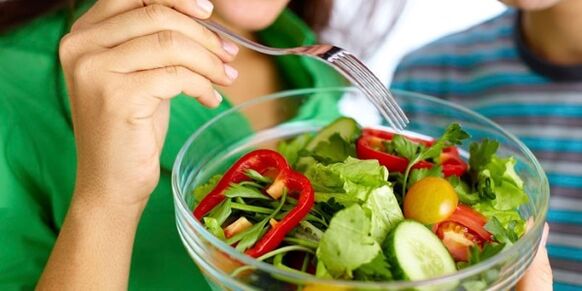
In order that the feeling of hunger is not constant, it is recommended to include in the diet more green vegetables, beets and tomatoes. The use of fermented milk products, cheeses and oats will help solve digestive problems.
The diet can be used by people with different types of problems with blood cholesterol - high or low levels. If you follow strict rules, you can normalize your metabolism and cholesterol levels without the use of medication.
Dietary characteristics for athletes
The low carbohydrate content is offset by the high intake of protein products, and since protein has a positive effect on muscle growth and building, diet can be recommended to athletes involved in strength sports and bodybuilding.
The diet usually starts with consuming a daily serving of sugar, which is about 58% of normal values. The reduction of carbohydrates in the diet should be gradual.
The main problem for athletes following a carbohydrate-free diet is the need to choose foods rich in protein but at the same time low in fat and low in carbohydrates. It is recommended to add small pieces of brown rice, lentils, wholemeal flour to the diet.
You need to eat plenty of vegetables with slow carbohydrates. These are celery, asparagus, any cabbage, cucumbers, radish, rhubarb, spinach, tomatoes.
How to get out of the diet
A gradual exit from a carbohydrate-free diet is a guarantee of maintaining the achieved result. You can not immediately jump into what was forbidden on the first day - you need to gradually increase the amount of carbohydrates, calculating their amount in the food you eat. If you need to repeat the course of weight loss, then after a week of going out, you can return to the diet table.
You need to increase the amount of vegetables and fruits as well as follow a diet drinking regimen. Sweets should be rare guests at the table. It is advisable to make it a habit to replace sweet dishes with dried fruits.
In terms of physical activity, it is necessary to visit the gym and pool. A contrast bath is beneficial for healing and physical exercise. Evening walks are also recommended.
Results: before and after photos
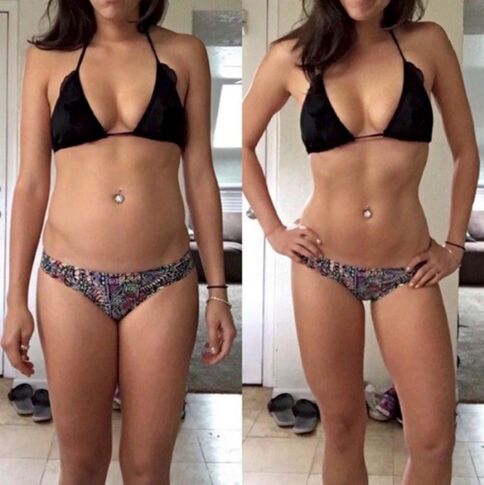
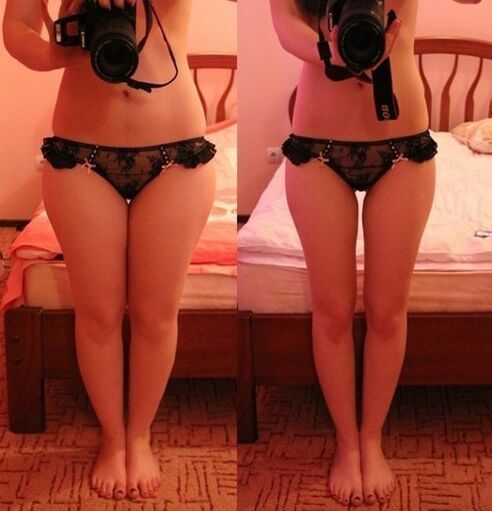
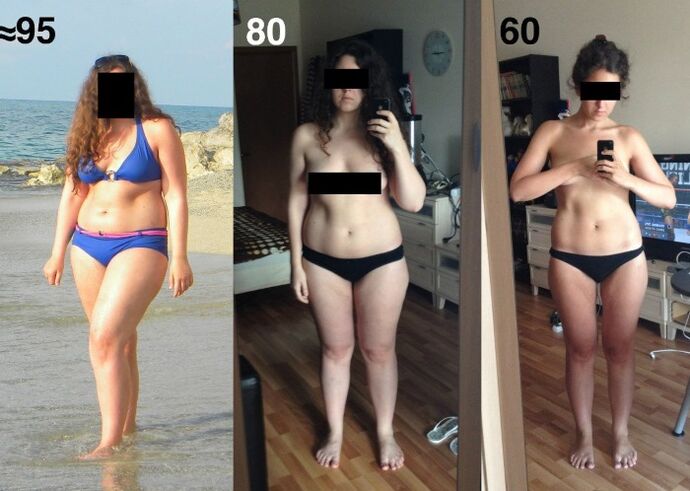
The cost of the diet
The carb-free table contains common products that are easy to buy at any time of the year. Most products on the diet menu are meat products that are expensive, so a week of food at a carb-free table is quite expensive.
Contraindications
A low carb diet is contraindicated in patients with the following health conditions:
- lack of pyruvate carboxylase;
- porphyria;
- disorders of fat metabolism.
Possible side effects:
- migraine;
- muscle weakness and fatigue;
- mixed.
A diet menu consisting of recommended (diet-approved) foods is generally not recommended for adults with epilepsy. In some cases, low-carb diet options with fewer carbohydrate intakes are considered more beneficial for teens and adults.
A carbohydrate-free diet helps improve well-being in metabolic disorders, diabetes, hypertension and other diseases related to the heart and blood vessels. A sample menu and a chart of allowed foods will help you quickly understand the diet and quickly achieve results in normalizing body weight and improving well-being.














































